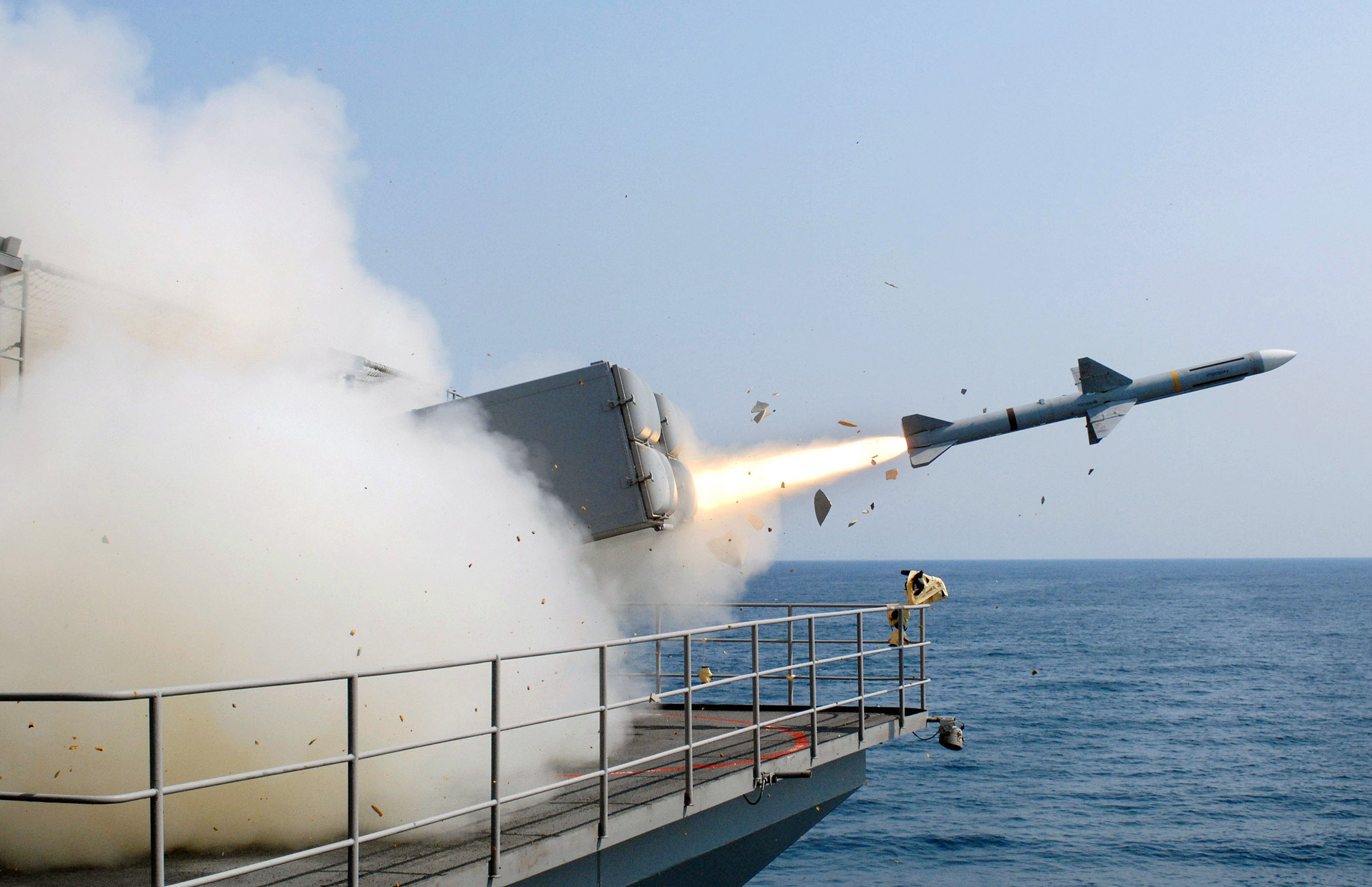China’s researchers recently claimed to have developed a working electromagnetic railgun, potentially providing the PLA with one of the most disruptive new weapons of the 21st century. Whether they actually have overcome the technical issues that long stymied U.S. work in this space remains to be seen, but it is clear that the PLA research investment in electromagnetic and power-generation systems goes back well over a decade.
Artillery has been powered by relatively inefficient chemical explosions since at least 1128, when the first depiction of a cannon was carved in western China. By contrast, a railgun uses magnets to accelerate projectiles to speeds that can surpass Mach 6. Railguns promise to match the greater range and accuracy of missiles and rockets with the low-cost-per-shot of traditional artillery. This flips the cost-imposition problem that bedevils modern militaries, where even successful systems can become incredibly expensive to operate or simply overwhelmed by enemies firing swarms of cheaper weapons. U.S. forces off Yemen, for instance, are shooting cruise missiles, which cost at least three orders of magnitude more than the drones they are intended to destroy.
The U.S. military was a leader in railgun research for many years, but it ended its program in 2021 after spending over $500 million. The stated reasons were the engineering challenges involved, particularly the tendency for the barrel to wear down after only a few shots, as well as a desire to shift resources to other programs, such as hypersonic missiles. But an underlying driver was a mismatch between the envisioned role and shifting Navy priorities. The railgun was initially meant to equip the future Zumwalt-class destroyers, a program which was cut short over its own cost issues. The railgun was also primarily envisioned to conduct attacks that the Navy now believes can be handled by existing cruise missiles and new hypersonic missiles. Railguns’ potential as an air/missile/drone defensive system were never fully explored, despite this being a far thornier problem for the Navy and other U.S. services.
While the U.S. may have lost interest for the time being, railgun R&D presses on in other states. In 2023, the French Defence Procurement Agency unveiled a naval electromagnetic railgun project, while the Japanese military is working on a railgun for air defense. Last year, a Japanese ship performed the first-ever railgun test at sea, a success that led the Ministry of Defense to request 23.8 billion yen (about $160 million) for railgun R&D in its 2024 budget.
Yet the nation that has demonstrated the most continuing interest is China. In December, the South China Morning Post reported that researchers at the PLA Naval Engineering University had developed a working electromagnetic railgun. The Chinese team claimed that their railgun can fire a projectile 100 to 200 kilometers at Mach 6. Perhaps most importantly, it uses up to 100,000 AI-enabled sensors to identify and fix any problems before critical failure, and can slowly improve itself over time. This, they said, had enabled them to test-fire 120 rounds in a row without failure, which, if true, suggests that they solved a longstanding problem that reportedly bedeviled U.S. researchers. However, the team still has a ways to go before mounting an operational railgun on a ship; according to one Chinese article, the projectiles fired were only 25mm caliber, well below the size of even lightweight naval artillery.
As with many other Chinese defense technology programs, much remains opaque about the program. But various open sources reveal important details.
Records of Chinese work on railguns date to 2011. In 2018, pictures appeared of a test system mounted on the bow of the Type 072III-class landing ship Haiyangshan. The following month brought word that the “Red Banner” had been awarded on “the eve of the March 8th Women’s Day” to researcher Zhang Xiao for her work in “power supply maintenance” and “system simulation” during successful tests on the ship.
Zhang was part of a team from the National Key Laboratory for Vessel Integrated Power System Technology—the same lab credited with the more recent success. Part of the People’s Liberation Army Navy University of Engineering, it is a major naval lab in Wuhan, Hubei, jointly managed by the PLA Navy and the 712th Research Institute. The 712th is a defense research institute specializing in ship-based electrical power under the China State Shipbuilding Corporation, the state-owned enterprise that manufactures all of China’s naval vessels—and which was named to the U.S. prohibited list in 2021 by President Biden.
Twenty years ago, Chinese leaders realized that shipboard power—needed in vast quantities for sensors, jammers, networks, and weapons, including electromagnetic weapons—was a bottleneck in its development of a modern navy. Further, the foreign countries who had the advanced systems China needed had banned export of these systems to China.
The National Key Laboratory was established in 2007 to break through this bottleneck and the foreign embargo by forging advances in ship-based electricity and electromagnetics. It is led by Rear Adm. Ma Weiming, a National Party Congress delegate and “national treasure” expert who has been lauded for his breakthroughs in shipboard electrical generation and electromagnetic catapult technology.
Lu Junyong, the lab scientist named in the SCMP article, leads the lab’s “National Electromagnetic Weapons Innovation Team” and has been working with Ma on electromagnetic launch technology for years. Indeed, a profile of Lu indicates that he and Ma have been working together on some of these broad issues for the past 20 years, even before the lab was formally created. And for at least a decade, Lu has been working on the problem of wear and gun failure that reportedly confounded U.S. researchers.
While railguns tend to get the headlines, this lab has made advances in a wide range of electric and electromagnetic applications for the PLA Navy’s warships. For example, the lab’s research on electromagnetic launch technology has also been applied to the development of electromagnetic catapults for the PLAN’s growing aircraft carrier fleet. The PLAN’s newest carrier is to be equipped with an electromagnetic catapult derived from the research carried out by this lab, making China only the second country with this advanced technology.
Further, the lab has made advances in next-generation naval electrical power. As an example, the lab’s development of a medium-voltage DC integrated power system—also known as medium-voltage direct current full electric propulsion—is set to allow the PLAN’s newest warships, including the Type 003 aircraft carrier, Type 076 landing helicopter dock, and Type 055 destroyer to carry the latest electromagnetic and laser weaponry, as well as advanced systems such as integrated RF systems.
The lab’s research has also been transferred into strategic civilian industries via China’s policy of military-civil fusion. Its variable current technology has been used to develop intelligent micro-grids, and a direct-drive wind power inverter allegedly broke a foreign monopoly on this technology, reducing the price substantially. Its energy research has led to the creation of an intelligent power station for remote military outposts in the South China Sea.
While it remains to be seen whether the Chinese navy can develop a full-scale railgun, produce it at scale, and integrate it onto its warships, it is obvious that it has made steady advances in recent years on a technology of immense military significance that the US has abandoned . Moreover, a broader program on shipboard electrical power may prove to be even more consequential, allowing for integration of all manner of advanced weaponry and electronic systems for China’s warships.
Matt Bruzzese is a senior Chinese-language analyst for BluePath Labs.
Peter Singer is Senior Fellow at New America, Professor at Arizona State University, and Managing Partner of Useful Fiction LLC.





















Discussion about this post